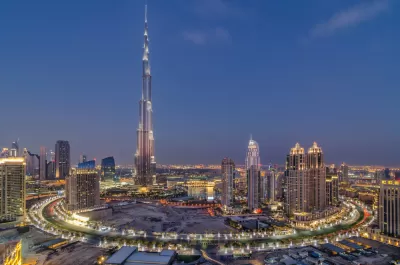The new book Super Tall, by architect and writer Stefan Al, explains how the new generation of skyscrapers are built and how they fit into their respective urban fabrics.

"Dozens of supertalls are going up around the world, mostly in Asia and a certain small island across from New Jersey. The Empire State Building, which was completed in 1931 and remained the third-tallest skyscraper in the world until 1998, now ranks 54th, and sixth in its own city. Al’s book captures an important moment in architecture and urbanism."
"The trouble is, Al’s veneration of tall buildings, and, implicitly, the entities that create them, is all too pure. Granted, Al is an architect; he wants to build, and he wants to marvel. But his treatment of supertalls focuses on technology and awe at the expense of humanism."
"How to build a skyscraper is one thing. Why to build one is another, especially in light of both their detriments and our larger ecological challenges.With the possible exceptions of Hong Kong and Manhattan, few cities in the world are so dense as to demand 900-meter buildings. Usually, two of 450 meters, or 10 of 90 meters, will suffice. Tokyo, for instance, proves that merely tall and moderately tall buildings do just fine. By contrast, the Burj Khalifa is little more than an extravagant metaphor amid Dubai’s expanses of undeveloped desert."
FULL STORY: Reaching for the Heavens

Maui's Vacation Rental Debate Turns Ugly
Verbal attacks, misinformation campaigns and fistfights plague a high-stakes debate to convert thousands of vacation rentals into long-term housing.

Planetizen Federal Action Tracker
A weekly monitor of how Trump’s orders and actions are impacting planners and planning in America.

In Urban Planning, AI Prompting Could be the New Design Thinking
Creativity has long been key to great urban design. What if we see AI as our new creative partner?

Cal Fire Chatbot Fails to Answer Basic Questions
An AI chatbot designed to provide information about wildfires can’t answer questions about evacuation orders, among other problems.

What Happens if Trump Kills Section 8?
The Trump admin aims to slash federal rental aid by nearly half and shift distribution to states. Experts warn this could spike homelessness and destabilize communities nationwide.

Sean Duffy Targets Rainbow Crosswalks in Road Safety Efforts
Despite evidence that colorful crosswalks actually improve intersection safety — and the lack of almost any crosswalks at all on the nation’s most dangerous arterial roads — U.S. Transportation Secretary Duffy is calling on states to remove them.
Urban Design for Planners 1: Software Tools
This six-course series explores essential urban design concepts using open source software and equips planners with the tools they need to participate fully in the urban design process.
Planning for Universal Design
Learn the tools for implementing Universal Design in planning regulations.
Appalachian Highlands Housing Partners
Gallatin County Department of Planning & Community Development
Heyer Gruel & Associates PA
Mpact (founded as Rail~Volution)
City of Camden Redevelopment Agency
City of Astoria
City of Portland
City of Laramie


























